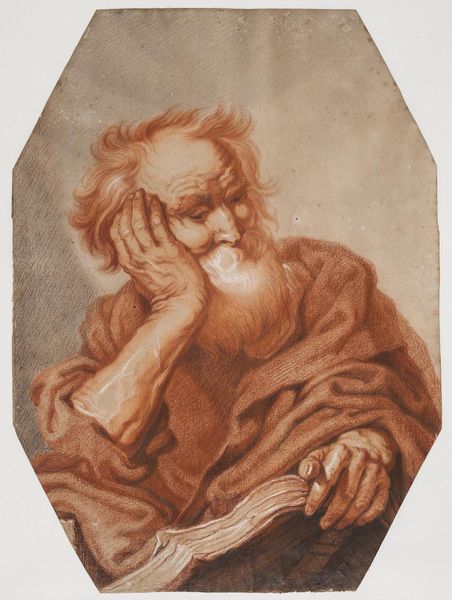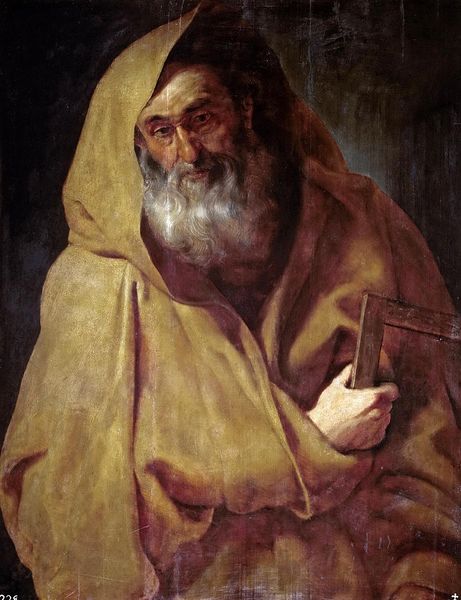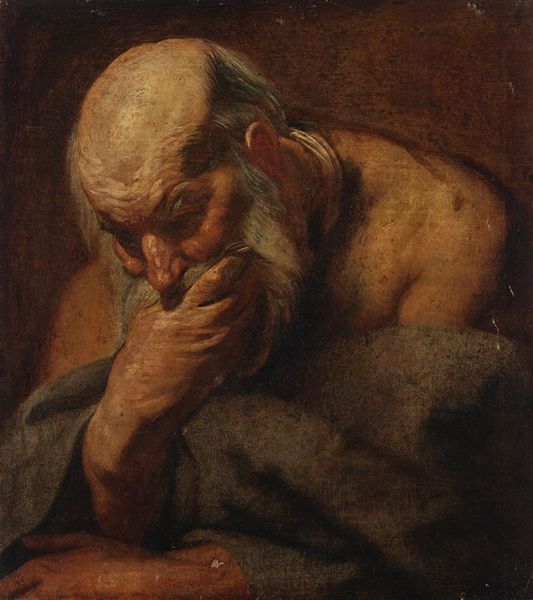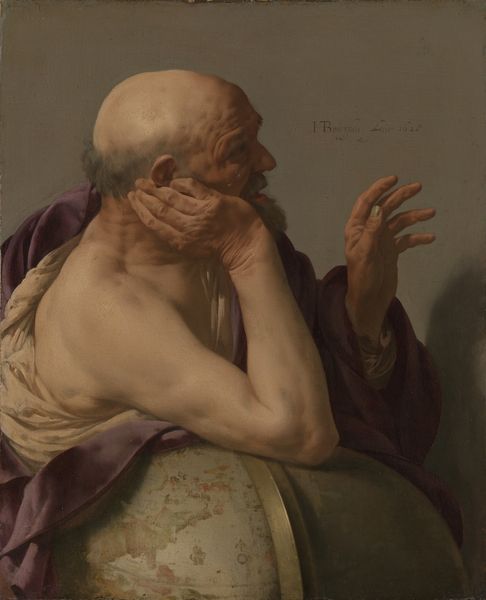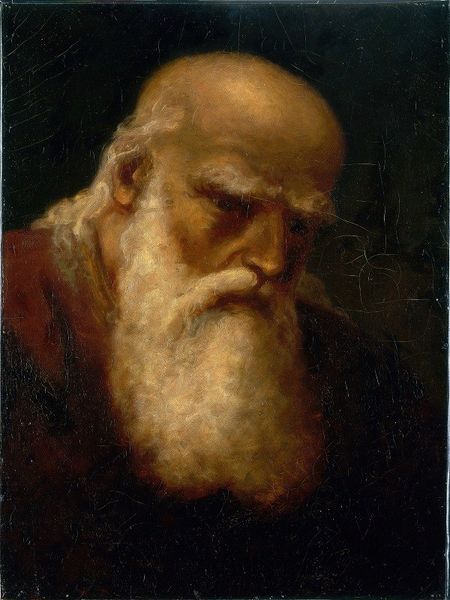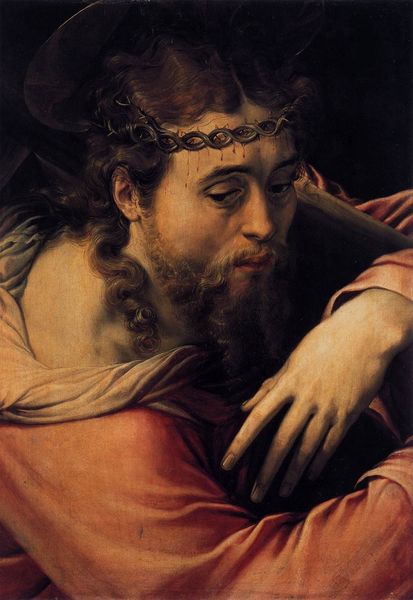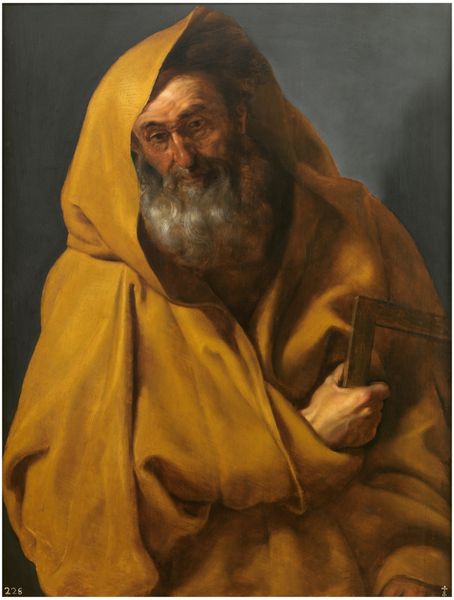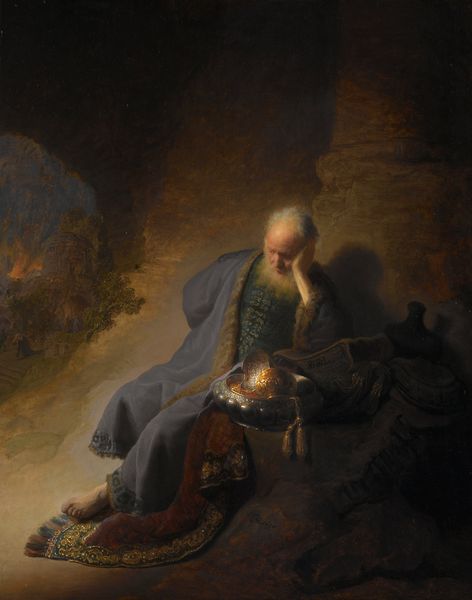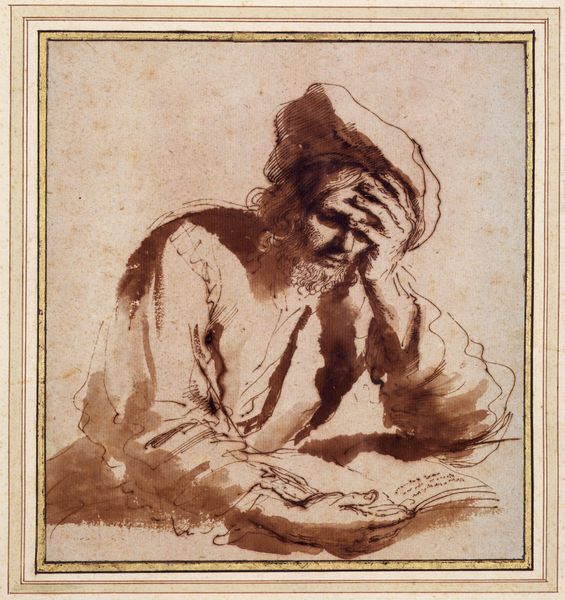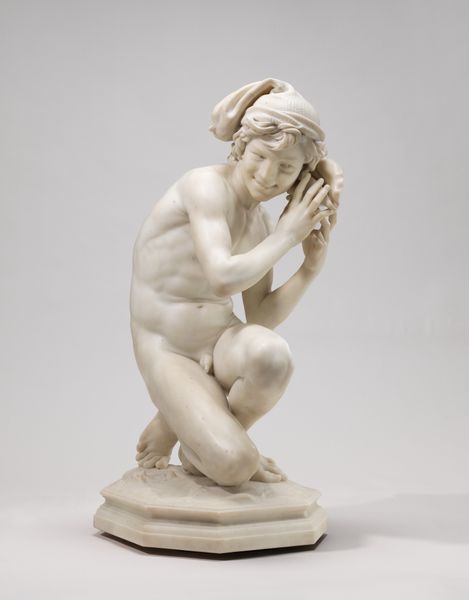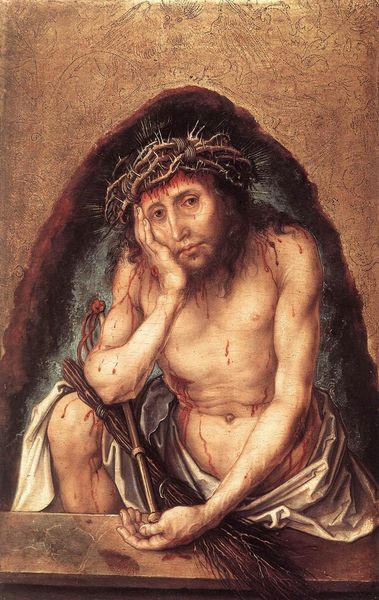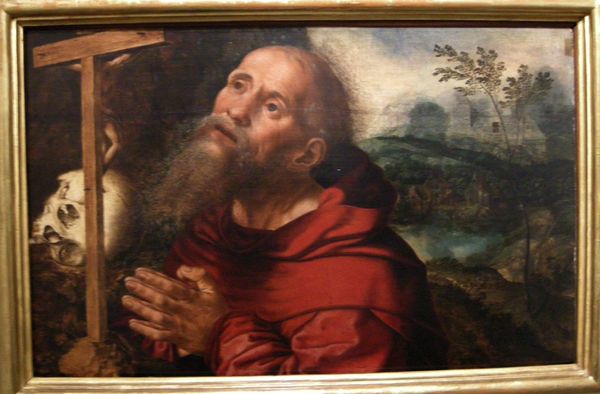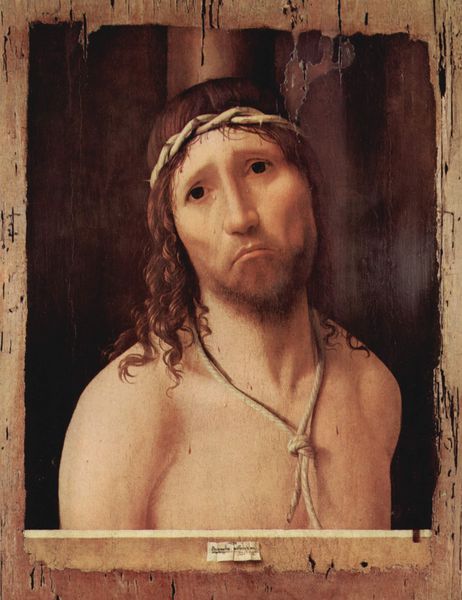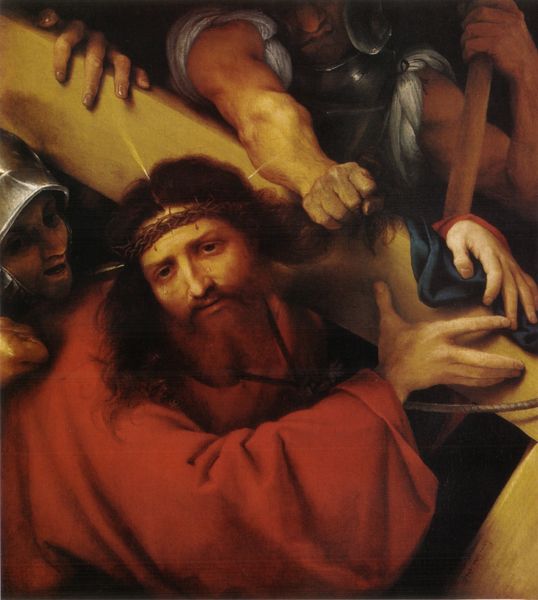
oil-paint, canvas
#
portrait
#
oil-paint
#
landscape
#
figuration
#
canvas
#
portrait reference
#
romanticism
#
history-painting
Dimensions: 97 cm (height) x 76 cm (width) (Netto)
Curator: Immediately, I'm struck by the somber mood; it feels very weighty. Editor: Indeed. We are looking at "Den Sidste Skjald," or "The Last Bard" by J.L. Lund, painted in 1837. It is rendered in oil on canvas and resides here at the SMK. Curator: Oil on canvas, typical for the period. But look at the texture of the rock—how skillfully Lund has created a tactile sense of stone through layering. What’s your take on this lonely figure? Editor: I see a commentary on cultural loss and the role of the artist. He is sitting beneath a dolmen, a prehistoric monument, suggesting a link to a distant, perhaps idealized, past. The bards, keepers of tradition, are vanishing, and with them, their stories. It speaks volumes about Denmark’s anxieties at the time. Curator: Anxieties perhaps stemming from the shifting production and distribution of culture. The traditional role of the bard—performance and storytelling—were being challenged by print and emerging industrialized forms of entertainment. This piece then becomes a memorial to lost labour and the craft traditions being threatened. Editor: Absolutely, and consider the power dynamics at play within the museum as a site of cultural validation. Placing "The Last Bard" on display legitimizes this romanticized vision of Danish history while simultaneously solidifying the institution’s role in shaping national identity. Curator: So it's not just a painting of loss, but one wrapped up in institutional validation. The act of exhibiting art impacts cultural discourse in a continuous loop. Editor: Precisely. Reflecting on this piece, one considers how the painting itself becomes part of the narrative about the past, influenced by societal narratives that persist into our present. Curator: Right, and Lund's use of such readily available and relatively cheap material speaks to his intention of making a social, as much as an aesthetic statement about value and permanence.
Comments
No comments
Be the first to comment and join the conversation on the ultimate creative platform.
